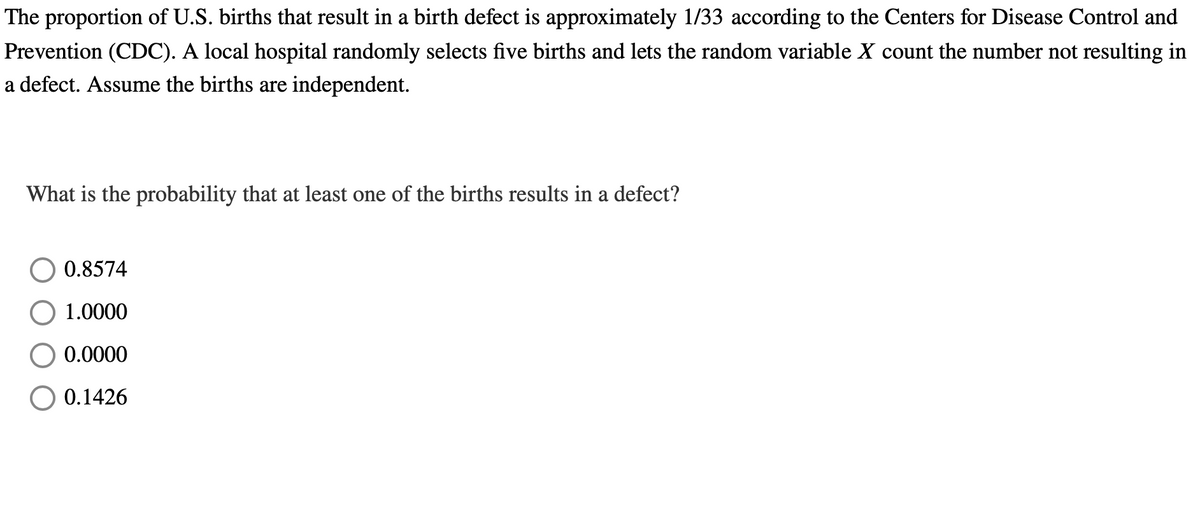The proportion of U.S. births that result in a birth defect is approximately 1/33 according to the Centers for Disease Control and Prevention (CDC). A local hospital randomly selects five births and lets the random variable X count the number not resulting in a defect. Assume the births are independent. What is the probability that at least one of the births results in a defect? 0.8574 1.0000 0.0000 0.1426
The proportion of U.S. births that result in a birth defect is approximately 1/33 according to the Centers for Disease Control and Prevention (CDC). A local hospital randomly selects five births and lets the random variable X count the number not resulting in a defect. Assume the births are independent. What is the probability that at least one of the births results in a defect? 0.8574 1.0000 0.0000 0.1426
Chapter8: Sequences, Series,and Probability
Section8.7: Probability
Problem 4ECP: Show that the probability of drawing a club at random from a standard deck of 52 playing cards is...
Related questions
Question

Transcribed Image Text:The proportion of U.S. births that result in a birth defect is approximately 1/33 according to the Centers for Disease Control and
Prevention (CDC). A local hospital randomly selects five births and lets the random variable X count the number not resulting in
a defect. Assume the births are independent.
What is the probability that at least one of the births results in a defect?
0.8574
1.0000
0.0000
O 0.1426
Expert Solution
This question has been solved!
Explore an expertly crafted, step-by-step solution for a thorough understanding of key concepts.
This is a popular solution!
Trending now
This is a popular solution!
Step by step
Solved in 3 steps with 4 images

Recommended textbooks for you

